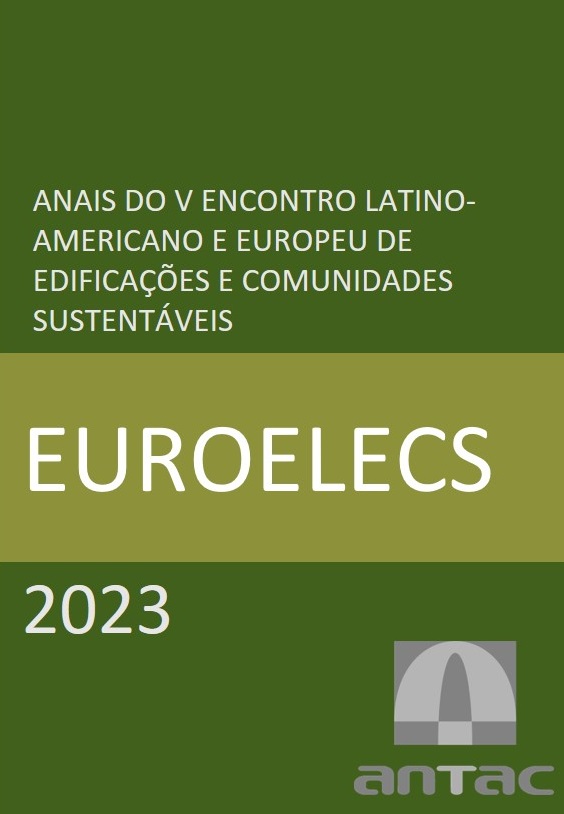Adaptive architectures in the construction of tomorrow
case study in Guaratiba, RJ
Keywords:
resiliência a inundações, arquiteturas adaptativas, regiões costeiras, vulnerabilidade socioambiental, GuaratibaAbstract
This article addresses the need for adaptation and resilience of homes to the environment in which they are located, highlighting the importance of coastal areas and the need to adapt to climate change. The region of Guaratiba, in the municipality of Rio de Janeiro, Brazil, faces challenges due to disorderly urban expansion, precarious infrastructure and socio-environmental vulnerabilities, such as recurring floods in the Piraquê-Cabuçu River basin. The local analysis reveals weaknesses, including irregular subdivisions in risk areas and a lack of basic sanitation infrastructure. The central objective of this research is to identify, in the national territory, architectures adapted to regional conditions in the flood scenario and to point out how these architectures could be implemented in the Guaratiba region. The methodology of this study consists of a literature review followed by an analysis of design references with adaptive and resilient architectures to flood scenarios, in the Brazilian context. Based on this contextualization, a diagnosis of the region is carried out, followed by a field visit to collect additional data. Based on these data, points of interest will be selected for the development of local urban diagnosis. The results demonstrate the importance of adaptive and resilient approaches in promoting sustainable urban development, ensuring the safety of the population and the preservation of the environment in a context worsened by floods.
References
Águas, R. (2010). Instruções técnicas para elaboração de estudos hidrológicos e dimensionamento hidráulico de sistemas de drenagem urbana. Rio de Janeiro: Subsecretaria de gestão de bacias hidrográficas – Rio Águas, Secretaria Municipal de Obras, Prefeitura da Cidade do Rio de Janeiro. Disponível em: http://www.rio.rj.gov.br/dlstatic/10112/8940582/4244719/InstrucaoTecnicaREVISAO1.pdf
Baptista, M.; Cardoso, A. (2016). Rios e Cidades. Revista da Universidade Federal de Minas Gerais, [S. l.], v. 20, n. 2, 2016. DOI: 10.35699/2316-770x.2013.2693.
DE JANEIRO, E. D. R. (1990). Lei Orgânica. Rio de Janeiro.
De Janeiro, Rio. (2011). Lei complementar 111/2011. Institui o Plano Diretor de Desenvolvimento Urbano Sustentável do Município do Rio de Janeiro. Disponível em: http://www2.rio.rj.gov.br/smu/buscafacil/Arquivos/PDF/LC111M.PDF.
De Janeiro, Rio. (2012). PDMAP - Plano Diretor de Manejo de Águas Pluviais da cidade do Rio de Janeiro. Prefeitura do Rio de Janeiro - Rio Águas. Disponível em: http://www.rio.rj.gov.br/dlstatic/10112/8940582/4249724/RA0027.RA.3775_RELATORIOSINTESEPDMAP.pdf.
De Janeiro, Rio. (2015). PDMAP - Plano Diretor de Manejo de Águas Pluviais da cidade do Rio de Janeiro. Prefeitura do Rio de Janeiro - Rio Águas. Disponível em: http://www.rio.rj.gov.br/dlstatic/10112/6165511/4162116/pmsb_drenagem_e_manejo_de_aguas_pluviais.pdfGEORIO. (2010, 2018, 2019, 2020). Sistema Alerta Rio da Prefeitura do Rio de Janeiro. GEORIO. Disponível em: http://alertario.rio.rj.gov.br.
Habitat, O. N. U. (2012). Estado de las Ciudades de América Latina y el Caribe. ONU. Disponible en: http://onu.org.pe
Linsley, R. K.; Kohler, M. A.; Paulhus, J. L. H. (1992). Hidrologia para engenharia. São Paulo: Editora Edgard Blucher.
Machado, M. L.; Nascimento, N.; Baptista, M. (2005). Curvas de danos de inundação versus profundidade de submersão: desenvolvimento de metodologia. Revista de Gestão de Água da América Latina, 2(1), 35-52.
Messner F.; Penning-Rowsell E.; Green C.; et al. (2006). Guidelines for Socio-economic Flood Damage Evaluation. In: Floodsite Report T09-06-01.
Miguez, M. G.; Rezende, O. M.; Veról, A. P. (2015). Drenagem Urbana: do projeto tradicional à sustentabilidade. Rio de Janeiro: Elsevier.
O'Neill, B. C.; Oppenheimer, M.; Warren, R.; Hallegatte, S.; Kopp, R. E.; Pörtner, H. O.; Yohe, G. (2017). Reasons for concern regarding climate change risks. Nature Climate Change, 7(1). IPCC. p. 28-37. Disponível em: https://www.nature.com/articles/nclimate3179.
Ribeiro, N. F. (2017) Rios Urbanos e as Relações do/no Espaço Livre: Estudo de Caso Bacia do Rio Piraquê-Cabuçu, Zona Oeste do Rio de Janeiro. Dissertação (Mestrado em Arquitetura e Urbanismo). Universidade Federal Fluminense, Programa de Pós-Graduação em Arquitetura e Urbanismo (UFF PPGAU). Niterói, Brasil.
RIO DE JANEIRO (RJ). Secretaria Municipal de Planejamento e Coordenação Geral. PUB RIO: plano urbanístico básico da cidade do Rio de Janeiro: junho de 1977. Rio de Janeiro: Secretaria Municipal de Planejamento e Coordenação Geral, 1977.
Rogelj, J.; Meinshausen, M.; Knutti, R. (2012). Global warming under old and new scenarios using IPCC climate sensitivity range estimates. Nature climate change, 2(4). IPCC. p. 248-253. Disponível em: https://www.nature.com/articles/nclimate1385.
Saraiva, F. R. (2000). Novissimo diccionario latino-portuguez. Rio de Janeiro: Garnier.
Shukla, P. R.; Skea, J.; Calvo Buendia, E.; Masson-Delmotte, V.; Pörtner, H. O.; Roberts, D. C.; Malley, J. (2019). Climate Change and Land: an IPCC special report on climate change, desertification, land degradation, sustainable land management, food security, and greenhouse gas fluxes in terrestrial ecosystems. IPCC. Disponível em: https://www.ipcc.ch/srccl/.
United Nations. (2015). The millennium development goals report. New York: UN.
Veról, Aline, et al. GESTÃO DE RISCOS E DESASTRES HIDROLÓGICOS. 1ª/2017, vol. 1, Elsevier.

